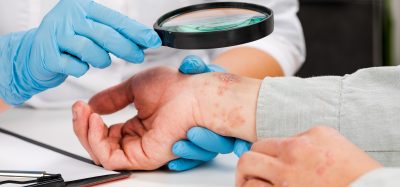Screening In-Depth Focus 2019
Posted: 7 June 2019 | Drug Target Review | No comments yet
This in-depth focus discusses screening and the uses of phenotypic profiling in drug discovery. Also examined is the role that CRISPR/Cas9 gene editing and native mass spectrometry play.
Included in this In-Depth Focus:
- Phenotypic profiling in drug discovery
Image-based phenotypic profiling of small molecules has been used for identification and characterisation of small molecules in drug discovery and can provide important insights into their mechanisms of action (MOA). Sean Lin, Ina Rothenaigner and Kamyar Hadian from the Helmholtz Zentrum München German Research Center for Environmental Health (HMGU) in Germany discuss the use of phenotypic profiling in drug discovery and how machine-learning algorithms could help improve objectivity, processing throughput, accuracy and MOA prediction of small compounds. - CRISPR/Cas9-engineered cancer models: the next step forward for targeted cancer therapy
The advent of CRISPR/Cas9 gene editing, together with the plummeting cost of whole-genome sequencing, has cleared a path for the development of customised cancer cell models. Elizabeth Turner Gillies and Fang Tian from the American Type Culture Collection (ATCC) in Gaithersburg, US, discuss recent developments in the field and challenges associated with targeted-therapy resistance.
- Screening and beyond in drug discovery
Progressing drug discovery projects to a stage that attracts commercial interest is a challenging endeavour, evidences by the fact that only a small proportion of drug discovery projects are successfully progressed to such a stage. A major cause of this is the lack of comprehensive profiling of compounds prior to initiating transnational in-vivo work. This article describes the minimal information that should be acquired as early as possible for a bioactive compound in the drug discovery value chain. - Compound and fragment screening by native mass spectrometry
Native mass spectrometry has the potential to be a fast, simple, highly sensitive and automatable technique for compound screening in drug design and discovery. In this article, Rod Chalk and Nicola Burgess-Brown discuss the key attributes of native mass spectrometry and reasons why it is not yet widely employed.
Related topics
CRISPR, Drug Discovery, Drug Discovery Processes, In Vivo, Mass Spectrometry, Screening
Related organisations
American Type Culture Collection, BMG LABTECH, ForteBio, Helmholtz Zentrum München German Research Center for Environmental Health, Sartorius
Related people
Elizabeth Turner Gillies, Fang Tian, Ina Rothenaigner, Kamyar Hadian, Nicola Burgess-Brown, Rod Chalk, Sean Lin








